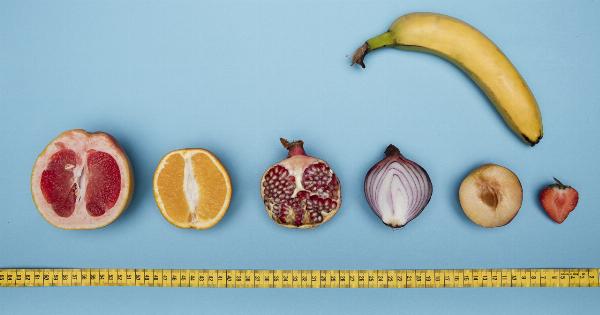Sexual pleasure is an essential aspect of human life and has fascinated scientists, researchers, and individuals for centuries.
While the study of sexuality encompasses various disciplines, understanding the neurological mechanisms behind sexual pleasure provides valuable insights into the intricacies of human sexuality. This article explores the science of sexual pleasure from a neurological perspective, shedding light on the brain processes that contribute to this pleasurable experience.
The Role of Dopamine in Sexual Pleasure
One of the key neurotransmitters involved in sexual pleasure is dopamine. Dopamine is a chemical messenger that plays a crucial role in the brain’s reward and pleasure centers.
During a sexual encounter, dopamine is released in various regions of the brain, including the nucleus accumbens, ventral tegmental area, and prefrontal cortex.
This release of dopamine creates a sense of pleasure and reinforces the desire for sexual activity. The more dopamine is released, the more intense the feelings of pleasure and reward become.
This intricate interplay of dopamine and sexual pleasure forms the basis for the neurological response to sexual stimuli.
The Role of Oxytocin in Sexual Pleasure
Oxytocin, often referred to as the “love hormone,” is another crucial component in the science of sexual pleasure. Oxytocin is released during sexual activities such as kissing, hugging, and orgasm.
This hormone promotes bonding, trust, and feelings of intimacy between sexual partners.
Studies have shown that oxytocin levels increase during sexual arousal and remain elevated during orgasm.
The release of oxytocin fosters a sense of connection and emotional closeness between partners, contributing to the overall experience of sexual pleasure.
The Reward Pathway and Sexual Pleasure
The brain’s reward pathway, which involves the release of dopamine and other neurotransmitters, is closely linked to sexual pleasure. This neural circuitry reinforces pleasurable behaviors by associating them with rewards.
When sexual stimuli are encountered, the brain’s reward circuitry is activated, enhancing the desire and motivation for sexual activity.
Research has revealed that the reward pathway is activated not only during sexual activity but also by the anticipation of sexual pleasure.
The release of dopamine during sexual arousal triggers a cascade of events in the brain, leading to increased blood flow to erogenous zones and heightened sensations, ultimately culminating in orgasm and the subsequent release of further dopamine.
The Role of the Amygdala in Sexual Pleasure
The amygdala, a small almond-shaped structure deep within the brain, is involved in the processing and regulation of emotions. It plays a crucial role in the experience of sexual pleasure by linking sexual stimuli to emotional responses.
Studies have shown that the amygdala’s activity increases during sexual arousal and reaches its peak during orgasm. This heightened activity in the amygdala contributes to the intense emotional experience associated with sexual pleasure.
It is also responsible for the activation of the body’s stress response during sexual activity, which leads to the release of various hormones and further enhances the pleasure experienced during sex.
The Role of the Prefrontal Cortex in Sexual Pleasure
The prefrontal cortex, the part of the brain responsible for higher-order cognitive functions, also plays a significant role in sexual pleasure. It is involved in decision-making, impulse control, and the regulation of emotions and desires.
During sexual activity, the prefrontal cortex evaluates the pleasurable sensations and guides the individual’s behavior. It helps maintain focus and attention, allowing individuals to fully engage in the sexual experience.
Additionally, the prefrontal cortex moderates the release of dopamine and other neurotransmitters, contributing to the overall balance of pleasure and satisfaction experienced during sexual activity.
Sensory Processing and Sexual Pleasure
Sensory processing, including the perception of touch, plays a vital role in sexual pleasure. The somatosensory cortex, located in the parietal lobe, is responsible for processing tactile information received from the body’s sensory receptors.
When individuals engage in sexual activities, such as caressing or being touched, the somatosensory cortex is activated, and the brain interprets the sensory input as pleasurable.
Stimulating the erogenous zones and other sensitive areas can lead to intense feelings of pleasure and heightened sexual arousal, primarily due to the sensory processing occurring in this brain region.
The Impact of Hormones on Sexual Pleasure
Hormones play a vital role in the intricate dance of sexual pleasure. Testosterone, predominantly known as a male sex hormone, is also present in females and plays a crucial role in sexual desire and arousal for both genders.
Estrogen, on the other hand, influences sexual motivation and behavior in females. Fluctuations in estrogen levels throughout the menstrual cycle can impact sexual desire and pleasure.
Progesterone, another hormone prominent in the menstrual cycle, can also influence sexual arousal and satisfaction.
In addition to sex hormones, stress hormones such as cortisol can influence sexual pleasure.
Under high-stress conditions, cortisol levels can interfere with sexual desire and function, making it more challenging to experience the full extent of sexual pleasure.
Neuroplasticity and Sexual Pleasure
The brain’s ability to change and adapt, known as neuroplasticity, also plays a role in sexual pleasure. Repeated sexual experiences can lead to changes in the brain’s neural circuitry and connections.
These changes can enhance the individual’s ability to experience pleasure and increase their overall sexual satisfaction.
Neuroplasticity is influenced by various factors, including frequency of sexual activity, novelty of sexual experiences, and the emotional context surrounding sexual encounters.
By actively engaging in healthy sexual experiences, individuals can shape their brain’s response to pleasure and potentially improve their overall sexual well-being.
Conclusion
The science of sexual pleasure from a neurological perspective provides valuable insights into the complex and wondrous nature of human sexuality.
Understanding the interplay between neurotransmitters, brain regions, and hormones is crucial in appreciating the intricacies of this pleasurable experience.
From the release of dopamine and oxytocin to the activation of the amygdala and prefrontal cortex, numerous neurological processes contribute to sexual pleasure.
The brain’s reward pathway and sensory processing also play integral roles, further enhancing the experience.
By deciphering the science behind sexual pleasure, researchers and individuals alike can deepen their understanding of human sexuality, paving the way for a more fulfilling sexual experience and improved sexual well-being.



























